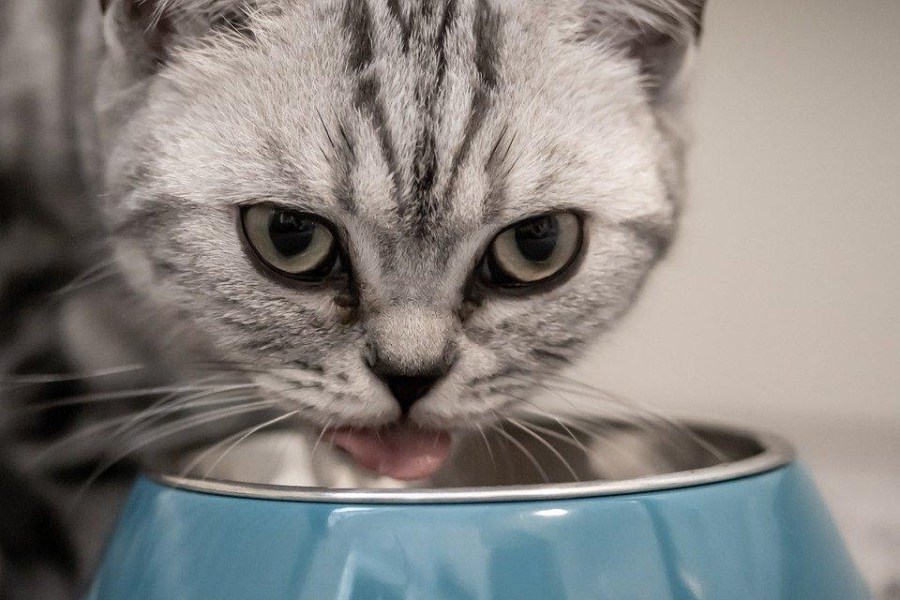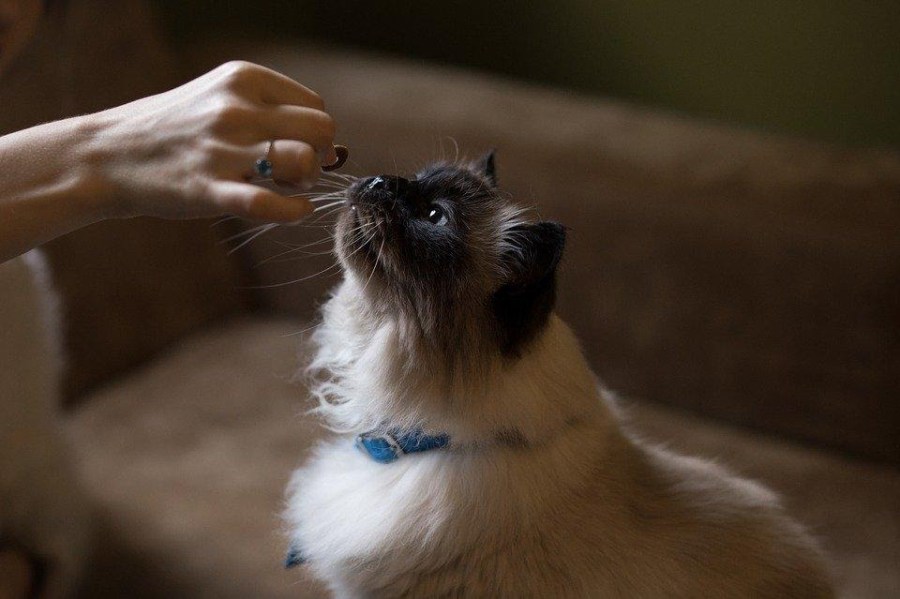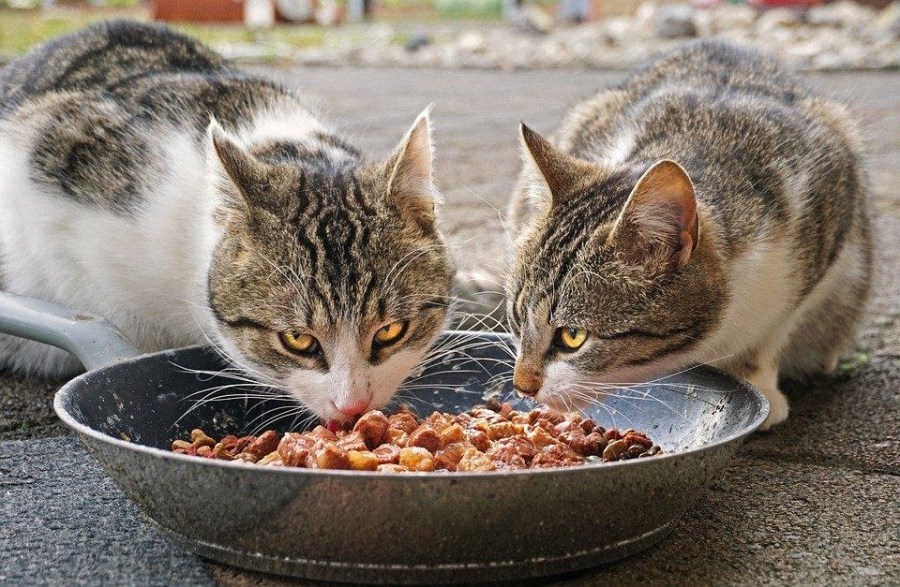How Much to Feed a Kitten 9 Weeks
Cats will beg for food just as often as dogs, but they don't need to eat as much per meal or as frequently in most cases. In fact, many cat owners wonder just how frequently they should be feeding their cat, especially if their feline begs for another snack all the time!
In truth, there's no single hard and fast answer to this question. Many cats have unique feeding schedules because they have certain dietary requirements or because their owners have specific routines of their own.
Today, let's break down some example feeding frequencies for cats and explore how often cats need to eat based on their age and weight.
Kitten vs. Adult Cat Feeding Frequencies
Naturally, the age of your cat will affect how often they should be fed (and how much food they should get with each meal).
In most cases, kittens require more food for every pound of body weight since they grow quite quickly. Because of this, kittens are fed both more often and more food in general than adult cats, whose metabolisms allow them to maintain static body weights for the majority of their lives.
If your kitten is less than six months old, they might benefit from having three meals per day. After they reach the six-month mark, kittens are fine if you feed them twice per day, especially since they will eat larger meals rather than more frequent smaller meals.
Similarly, adult cats only need to be fed once or twice per day, depending on their preferences and your personal schedule. The ideal frequency also depends on what type of food you feed them: wet or dry food or both.
In fact, unless your cat is unhealthy or there's a reason to feed them twice per day, feeding your cat once per day is fine as well.

Certain cats have health issues like diabetes. In these cases, your cat may need to be fed more than once per day, as cats usually take insulin with their meals.
Similarly, cats with hyperthyroidism may want to eat more frequently or even all the time. However, responsible cat owners should not feed their cats as often as they beg, especially if they have this condition. Hyperthyroidism can easily cause your cat to become overweight, leading to ancillary health issues like heart disease and more.
What about when your cat ages? As your cat gets older, their teeth could go bad, or they might eventually develop gum disease. Because of this, chewing dry food could be more difficult for them, so canned wet food could be a better idea, even if you have to feed them more frequently than you did for most of their life.
What Kind of Food Should Your Cat Eat, and How Much of Each Type?
The majority of cat owners feed their kitties dry food exclusively. If you're one of those cat owners, that's not a bad thing! Dry food can be completely nutritious so long as it has balanced vitamins and nutrients and doesn't leave out any major vitamin group.
Additionally, dry food stays fresher for longer and is less expensive than canned or wet food.
That being said, cats usually get their water from their food in the wild. Because of this, cats that exclusively eat dry food need to have plenty of water. If they don't get enough water, they could develop a urinary tract blockage.
On the other hand, canned wet cat food contains between 70% and 80% water. Cats that eat wet food can be fed canned food in addition to dry food or can even be fed wet food exclusively. Again, as long as the wet food has all the nutrients your kitty needs, you can't go wrong with only giving them canned food.
Example Cat Feeding Schedules

To recap, kittens below the age of six months usually benefit from having three meals per day. All other cats from six months of age into old adulthood are fine with one or two meals per day, depending on how much you feed them and what type of food they get. Unless your veterinarian recommends otherwise, this is a good basic cadence to follow.
Let's take a look at some example feeding schedules so you can get a better grasp of appropriate feeding frequencies.
Scheduled Feeding
Most cat owners feed their cats at scheduled times each day, and for a good reason. Cats thrive with predictability, particularly if a cat spends some time outside or otherwise away from their home. Scheduled feeding is also beneficial for cat owners, as they can plan out their kitty's meals to make sure they never accidentally skip one.
In most cases, scheduled feeding works best when the cat owner feeds their cat twice per day: once in the morning and once in the evening. This gives your cat a routine or cadence they can organize the rest of their day around.
Scheduled feeding is also great if you feed your cat wet food, as you can give them a can or part of a can every day and easily keep track of how much you feed them.
Free Feeding
Many problems with cats and weight come from free-feeding eating schedules. While cats love free feeding, they aren't very responsible with portion control (just like we humans sometimes have trouble moderating our food intake!). Left unchecked, many cats will continue to eat and eat and eat until they're stuffed.
Unfortunately, this can lead to long-term health problems like weight gain or even damage to your cat's digestive tract. However, some cats benefit from free-feeding since it gives them the flexibility to come get a snack whenever they feel hungry.
It all depends on your cat's personality. Some cats do better with free-feeding than others, so talk to your veterinarian and consider experimenting with free-feeding before dismissing it entirely.
Combination Feeding
Lots of cat owners also follow combination feeding schedules or cadences. For example, they may let their cat eat all the dry food they want by leaving a little bit of food left out in a bowl all day long.
Then the cat owners will feed their cat wet food at scheduled times, such as dinner. Cats typically prefer the taste and texture of wet food over dry food, so these cats will eat all of the wet food and only use the dry food as a supplementary food source.
Again, this all depends on the personality of your cat and whether they can self-modulate their feeding. In the combination feeding schedule, the cat is technically fed only once per day and has unlimited access to dry food in case they get unexpectedly hungry.
What if You Have Multiple Cats?

If you have multiple cats, you'll benefit from feeding them at the same time every day. This prevents the cats from competing with one another for each other's food and can even help them bond with one another.
Furthermore, feeding your cats at the same time is vital if you introduce a new kitten to a family household. The kitten will quickly learn that the adult cats know when feeding time is and will follow them around, mimicking their behavior and integrating more rapidly into the family unit.
You should also try to feed each of your cats with the same frequency. This will prevent jealousy; a cat that only gets to eat once per day may feel upset with their companion feline who's fed multiple times per day.
What if Your Schedule is Tight?
If your schedule is tight, don't feel bad about feeding your cat once per day. Once per day is usually plenty for most felines, even if they don't eat all of the food you give them in one sitting.
In fact, cats will frequently eat a little bit of food, go away for a while, then come back to their unfinished food and eat some more. Cats don't have very large stomachs, so they're prone to snacking throughout the day rather than binging a big meal all at once.
A Feast for a Feline
All in all, you can feed your cat with varying levels of frequency based on their diet, their personality, the type of food you feed them, and your personal schedule. It all depends on what works for you and your kitty!
If you aren't sure what feeding frequency is best for your cat, talk to your veterinarian about ideas. They may be able to suggest a frequency based on your cat's unique biology or their food requirements.
Sources:
Guide to Raising Underage Kittens | University of Wisconsin-Madison
Adult Cat Food: Canned vs. Dry and Feeding Schedule | PetMD
Do Cats Drink Water? Cat Hydration & Dehydration Prevention | Purina
Choosing the Best Feeding Method for Your Cat | PetMD
Source: https://www.reference.com/pets-animals/how-often-feed-cat?utm_content=params%3Ao%3D740005%26ad%3DdirN%26qo%3DserpIndex&ueid=2f530d5e-e523-4a49-b937-c2971c3336aa
Post a Comment for "How Much to Feed a Kitten 9 Weeks"